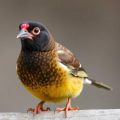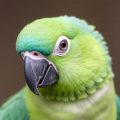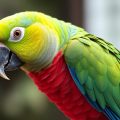Содержание
- Overview: Why E. coli and Pseudomonas Matter in Birds
- Understanding Escherichia coli (E. coli) in Birds
- Understanding Pseudomonas (especially Pseudomonas aeruginosa) in Birds
- How These Infections Spread and What Triggers Them
- Diagnosis: How Veterinarians Identify These Infections
- Treatment Principles: What Helps Birds Recover
- Prevention Is More Powerful Than Cure: Biosecurity and Husbandry
- Special Considerations by Bird Type
- Antibiotic Resistance and Stewardship
- Environmental Control: Disinfection and Managing Reservoirs
- Emerging and Complementary Approaches
- Case Examples: Learning from Real Scenarios
- When to Call the Vet: Warning Signs You Shouldn’t Ignore
- Zoonotic Risk: Can These Bacteria Affect Humans?
- Practical Sampling and Laboratory Questions to Ask
- Common Misconceptions and Pitfalls
- Resources and Where to Seek Further Help
SQLITE NOT INSTALLED
Birds are lively, curious creatures, and when they get sick it can be alarming and bewildering. Two bacterial culprits that show up again and again in avian medicine are Escherichia coli (E. coli) and Pseudomonas (most commonly Pseudomonas aeruginosa). They sound technical, but understanding what they are, how they behave, and what you can do about them makes a huge difference whether you’re managing backyard chickens, caring for pet parrots, or running a wildlife rehabilitation center. This article walks through these bacteria from top to bottom: who they affect, how infections present, how veterinarians diagnose and treat them, and—critically—what you can do to prevent outbreaks and protect both birds and people in your care.
I’ll keep things practical and conversational. Expect clear explanations, real-world examples, and step-by-step guidance for sampling, sanitation, and biosecurity. Along the way I’ll point out where professional veterinary advice is essential, and where simple changes in husbandry can prevent disease. There’s a lot of ground to cover, so let’s begin by setting a solid foundation of how these bacteria live, thrive, and cause trouble in birds.
Overview: Why E. coli and Pseudomonas Matter in Birds
E. coli and Pseudomonas are both gram-negative bacteria. They’re common in the environment and, under the right conditions, can move from harmless cohabitants to harmful pathogens. In birds, they’re not always primary invaders; often they take advantage of a weakened bird — stressed, immunosuppressed, or suffering another illness — to cause disease. That opportunistic nature makes them tricky: they can lurk unnoticed and then cause rapid, severe problems.
In poultry operations, even a single infectious episode can spread quickly and reduce production, increase mortality, and require veterinary intervention. In pet birds and aviaries, infections can be costly in emotional and financial terms. Wildlife species and rehabilitation situations introduce another layer of complexity because wild birds may carry different strains and reintroducing a bird with an infection into the wild can have conservation implications.
Importantly, both genera contain strains with antibiotic resistance, and Pseudomonas in particular is notorious for resisting many common disinfectants and drugs thanks to biofilm formation and innate resistance mechanisms. That makes prevention, careful diagnostics, and judicious antibiotic use essential.
Understanding Escherichia coli (E. coli) in Birds
E. coli is a diverse species. Many strains are harmless residents of the gut, but some are adapted to cause disease in birds. In poultry, avian pathogenic E. coli (APEC) is a well-known cause of colibacillosis—an umbrella term for systemic or localized infections that can affect the respiratory tract, air sacs, liver, and more. E. coli can also lead to septicemia, peritonitis, salpingitis in laying birds, and yolk sac infections in chicks.
E. coli infections often follow a breach of normal defenses. A bird that inhales dust, suffers a viral infection, or experiences heat stress may have compromised mucosal barriers that let E. coli invade tissues. Poor hygiene, contaminated feed or water, overcrowding, and rough handling all increase the risk. In pet birds, E. coli may appear as chronic diarrhea, weight loss, or as a secondary invader in wounds.
Pathogenesis centers on the organism’s ability to attach to tissues, produce damaging factors, and multiply rapidly. Clinically, you might see a range from mild, transient diarrhea to sudden deaths in flocks, depending on the strain and the bird’s overall health.
Common Clinical Signs of E. coli in Birds
- Respiratory signs: coughing, sneezing, nasal discharge, conjunctivitis, and airsacculitis (inflamed air sacs).
- Digestive signs: diarrhea, soiled vent feathers, decreased appetite.
- General signs: lethargy, reduced egg production, ruffled feathers, weight loss.
- Acute presentations: sudden death, septicemia, or peritonitis, particularly in flocks with vulnerable young chicks.
Understanding Pseudomonas (especially Pseudomonas aeruginosa) in Birds
Pseudomonas aeruginosa is an environmental bacterium that loves moisture. You’ll find it in standing water, damp bedding, drinking systems, and even in bottled water left open. It’s a classic opportunist—particularly dangerous when it colonizes wounds, the respiratory tract, the ear canal, or the cloaca. In pet birds, Pseudomonas often shows up as otitis, chronic respiratory disease, or chronic wounds. In poultry, it can cause respiratory disease and septicemia, but it’s frequently an opportunistic secondary invader after viral infections or trauma.
Pseudomonas is notable for a few reasons: it forms biofilms that protect it from disinfectants and antibiotics; it produces pigments and toxins that damage tissues; and it has a high propensity for multidrug resistance. For that reason, it’s often harder to treat and control than many other bacterial infections.
Clinical Signs Commonly Associated with Pseudomonas
- Respiratory problems: nasal discharge, sneezing, labored breathing, and chronic sinusitis.
- Wounds and ulcers that fail to heal properly and have a greenish tinge or foul odor.
- Otitis and ear canal infections, especially in species with extensive feathering around the ears.
- Systemic illness when the bacteria invade the bloodstream, leading to lethargy, anorexia, and sudden deterioration.
How These Infections Spread and What Triggers Them
Think of both organisms as opportunistic tenants that move in when the house is in disrepair. Transmission pathways include:
- Fecal-oral: contaminated food, water, or surfaces.
- Aerosols and dust: especially in poultry houses where feathers and droppings circulate.
- Direct contact: wounds, pecking injuries, or contaminated hands and equipment.
- Environmental reservoirs: contaminated waterlines, puddles, and damp bedding for Pseudomonas; fecal contamination for E. coli.
Triggers that convert colonization into disease include stress (transport, heat, cold), nutritional deficiencies, concurrent viral or parasitic infections, overcrowding, and poor sanitation. Young chicks and immunosuppressed birds are at higher risk.
Diagnosis: How Veterinarians Identify These Infections
Getting the diagnosis right matters. Both bacteria can look similar clinically, and cultures plus sensitivity testing are the standard tools for deciding on treatment.
Common Diagnostic Steps
- History and clinical exam: The vet will ask about recent changes, mortality, water and feed sources, and biosecurity practices.
- Sample collection: swabs of lesions, tracheal or choanal swabs for respiratory disease, fecal samples, or tissue for necropsy. Bloodwork may be used for systemic illness.
- Microbial culture and identification: traditional culture grows the bacteria and identifies them to species level. Pseudomonas and E. coli have characteristic growth patterns on routine media.
- Antibiotic susceptibility testing: critical for guiding treatment because resistance patterns vary widely.
- Molecular tests: PCR can detect specific pathogenic strains or virulence factors and is faster than culture in some settings.
- Advanced tools: MALDI-TOF and sequencing are available in some labs for precise identification.
Tips for Proper Sample Handling
- Collect samples before starting antibiotics whenever possible so cultures aren’t falsely negative.
- Use sterile swabs and appropriate transport media provided by the laboratory.
- Keep samples cool, deliver to the lab quickly, and clearly label species, site, and clinical history.
- For necropsy samples, include multiple tissues (liver, spleen, air sacs, lungs) and request both culture and histopathology if possible.
Treatment Principles: What Helps Birds Recover
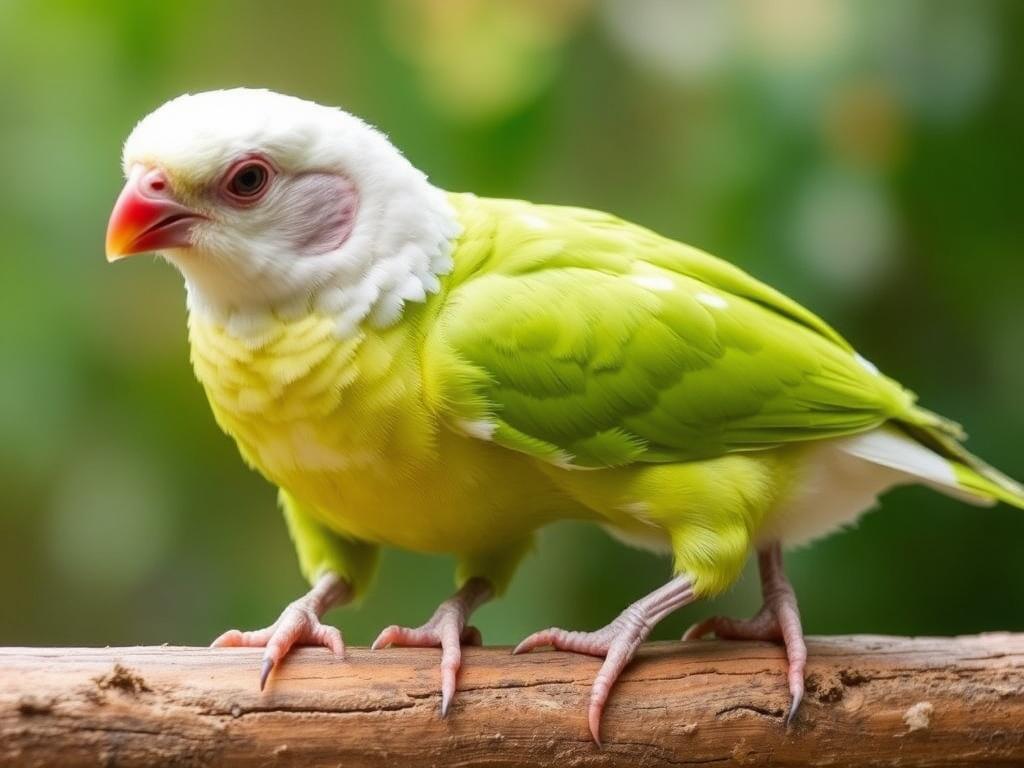
Treatment combines supportive care, targeted antimicrobial therapy, and addressing the underlying cause. Rapid initiation of appropriate therapy improves outcomes, but indiscriminate antibiotic use is discouraged because it promotes resistance.
Supportive Care Is the Foundation
For all sick birds, providing supportive care is crucial:
- Thermal support: keep the bird warm but not overheated.
- Fluid therapy: many birds are dehydrated or in shock; the vet will decide the best route (oral, subcutaneous, or intravenous).
- Nutritional support: encourage eating, offer easy-to-digest foods, and consider assisted feeding if needed.
- Clean environment: remove soiled bedding, reduce drafts, and isolate sick birds to reduce stress and contagion.
Antibiotics Should Be Guided by Culture When Possible
Because both E. coli and Pseudomonas vary in susceptibility, culture and sensitivity testing gives the best chance of success. Pseudomonas is often resistant to many commonly used antibiotics, so empirical treatment without lab data can fail. The veterinarian will choose a drug based on the lab report, the bird species, the infection site, and bird-specific considerations. It is important not to try human antibiotics or guess doses without veterinary guidance.
Topical and Local Treatments
For wounds, topical antiseptics, appropriate dressings, and sometimes topical antibiotic ointments (under vet guidance) are useful. For chronic respiratory conditions, nebulization or inhalation therapies may be employed by a veterinarian to deliver medication directly to the airways.
Prevention Is More Powerful Than Cure: Biosecurity and Husbandry
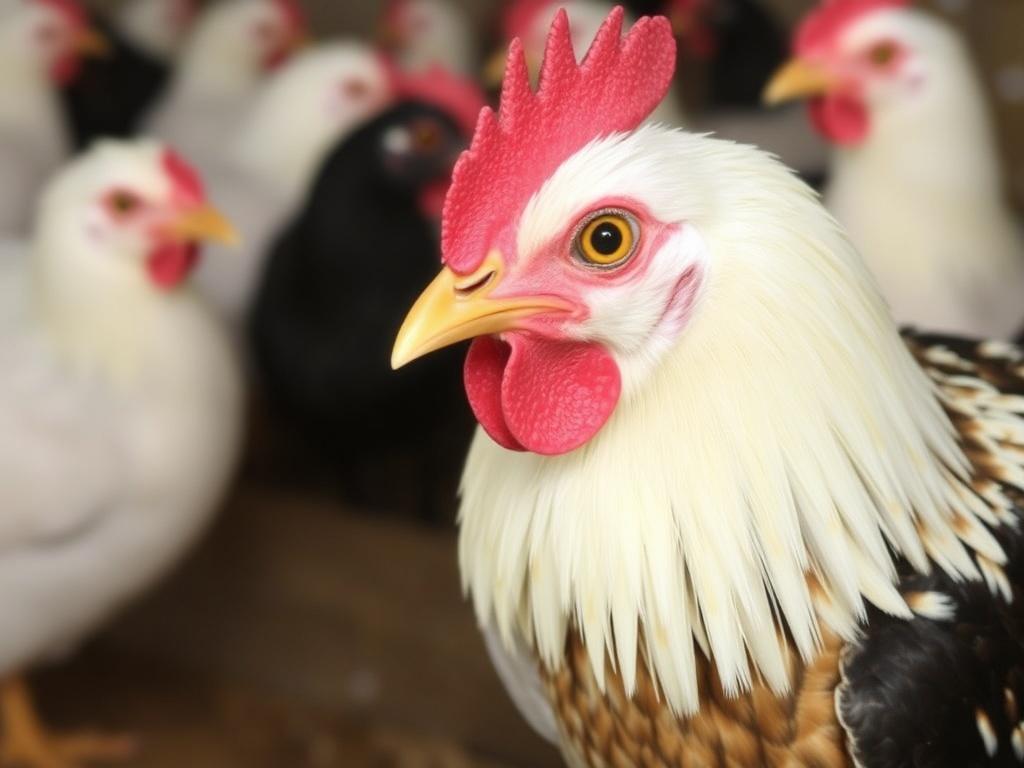
Preventing infections is often cheaper and kinder than treating them. Simple changes in husbandry and biosecurity have a big impact.
Key Preventive Measures
- Keep water systems clean and flowing: stagnant water favors Pseudomonas growth.
- Practice strict hygiene: regular cleaning and disinfection of feeders, nest boxes, perches, and cages.
- Limit crowding: provide species-appropriate space to reduce stress and disease spread.
- Quarantine new birds: isolate new arrivals for an appropriate period and monitor for signs before mixing.
- Manage pests: rodents and insects can spread bacteria and damage biosecurity.
- Nutrition and husbandry: a balanced diet and stress minimization boost immune function.
- Vaccination: in commercial poultry, vaccines against E. coli exist and may reduce disease severity; consult a poultry veterinarian for appropriate programs.
A Practical Biosecurity Checklist
| Area | Action | Why It Matters |
|---|---|---|
| Entry and Exit | Restrict access, provide footbaths or disposable boot covers | Limits mechanical transfer of bacteria on shoes and clothing |
| Water Systems | Flush, clean, and disinfect regularly; avoid stagnant areas | Reduces Pseudomonas reservoirs |
| Bedding and Litter | Change frequently, keep dry | Prevents bacterial proliferation and reduces ammonia |
| Feed Hygiene | Store properly, keep feeders clean | Prevents fecal contamination and mold |
| Quarantine | Separate new or sick birds until cleared | Stops introduction or spread of disease |
Special Considerations by Bird Type
Different species have different vulnerabilities and management needs.
Poultry (Chickens, Turkeys, Ducks)
In commercial and backyard flocks, E. coli is often associated with colibacillosis that follows viral infections (like infectious bronchitis or Newcastle disease) or environmental stressors. Young chicks are especially vulnerable to yolk sac infections. Pseudomonas is less common as a primary pathogen in poultry but can cause problems via contaminated drinking lines and damp environments.
Hygiene, vaccination where available, and prompt attention to respiratory outbreaks are critical.
Pet Birds (Parrots, Finches, Canaries)
Pet birds may present with chronic respiratory issues, chronic diarrhea, or non-healing wounds. Pseudomonas ear infections and chronic sinusitis are relatively common in parrots and can be hard to eradicate without laboratory guidance. For small passerines, stress and poor husbandry often precipitate bacterial illness.
Quarantine new birds, maintain clean cages, and seek veterinary care early if you notice subtle changes like decreased vocalization or appetite.
Raptors and Waterbirds
Raptors can get wound infections from prey-related injuries; Pseudomonas may be involved, particularly if wounds are exposed to water. Waterbirds are naturally exposed to Pseudomonas in aquatic environments, so rehabilitation centers must pay particular attention to water hygiene and wound management before release.
Antibiotic Resistance and Stewardship
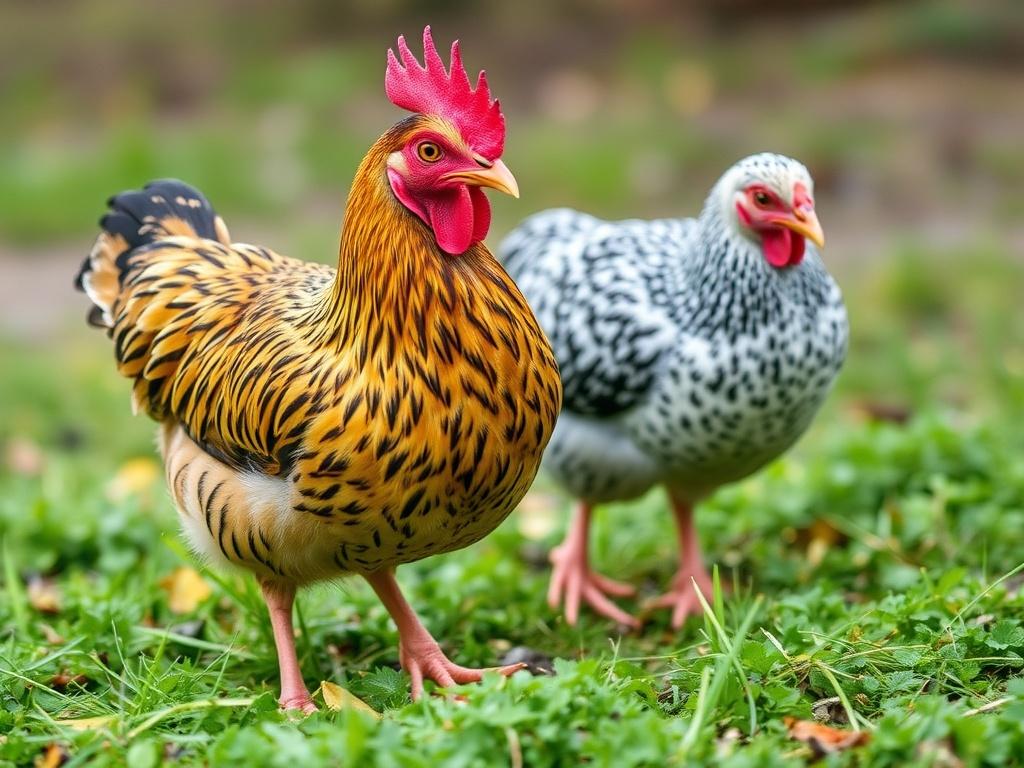
One of the most important trends in modern veterinary care is antibiotic stewardship: using antibiotics only when necessary, choosing the right drug, and completing courses correctly. Both E. coli and Pseudomonas can carry and share resistance genes. Indiscriminate use of broad-spectrum antibiotics selects for resistant strains that are harder to treat and can spread to other animals—or occasionally humans.
Veterinarians increasingly treat infections based on culture and sensitivity results rather than empirical guessing. In flock settings, changes to husbandry, vaccination strategies, and biosecurity often have greater long-term benefit than repeated antibiotic cycles.
Environmental Control: Disinfection and Managing Reservoirs
Environmental control targets the places bacteria hide and multiply. Pseudomonas’ love of moisture and ability to form biofilms make it a persistent problem in water systems and damp areas. E. coli thrives where fecal contamination persists.
Disinfection Tips
- Remove organic matter first: disinfectants work poorly on dirty surfaces; clean before disinfecting.
- Rotate disinfectants if persistent contamination occurs: different products have different modes of action.
- Focus on drinking lines, waterers, feeders, perches, and nest boxes.
- Keep environments dry where possible, and fix leaks promptly.
Special Note on Biofilms
Biofilms are protective bacterial communities attached to surfaces, especially in water systems. They reduce the effectiveness of disinfectants and allow bacteria like Pseudomonas to persist in spite of cleaning. Mechanical cleaning (scrubbing), flushing, and periodic treatment with agents effective against biofilms are necessary to control these reservoirs.
Emerging and Complementary Approaches
Researchers and clinicians are exploring alternatives and complements to antibiotics. These include:
- Bacteriophage therapy: viruses that specifically target bacteria show promise in some settings, particularly for antibiotic-resistant strains.
- Probiotics and prebiotics: promoting a healthy gut flora may reduce colonization by pathogenic E. coli in poultry.
- Improved vaccines: ongoing work aims to expand and improve vaccines against avian E. coli strains.
- Advanced diagnostics: faster PCR-based tests and on-site rapid culture systems are helping veterinarians choose targeted treatments sooner.
These approaches remain adjuncts for now; many are under study or are niche applications. Always consult a veterinarian before trying new or experimental therapies.
Case Examples: Learning from Real Scenarios
Here are a couple of illustrative, anonymized scenarios that show typical presentations and practical responses.
Case 1: Backyard Chicken Flock and Colibacillosis
A small backyard flock experienced sudden increases in mortality and a drop in egg production after a heat wave and a period of heavy rains. Several birds had labored breathing and soiled vents. The owner collected samples and a veterinarian cultured E. coli from air sac swabs. Treatment focused on supportive care and targeted antibiotics based on sensitivity testing. Crucially, the owner also repaired drainage around the coop, replaced damp bedding, and spaced the birds to reduce heat stress. Future seasons included improved shade and ventilation. The combined approach—appropriate therapy plus husbandry improvements—reduced recurrence.
Case 2: Pet Parrot with Chronic Sinusitis
A parrot had intermittent nasal discharge for months and responded poorly to several courses of empirical antibiotics. Culture from choanal swabs grew Pseudomonas with resistance to several common drugs. The avian vet used culture-based therapy, topical sinus flushing, and nebulization with an appropriate antimicrobial and anti-inflammatory measures. The owner improved cage hygiene, removed a humidifier near the bird, and scheduled follow-ups. The bird’s clinical signs resolved after a targeted, combined approach.
When to Call the Vet: Warning Signs You Shouldn’t Ignore
If you see any of the following, seek veterinary attention promptly:
- Sudden deaths in a flock or multiple birds becoming ill within days
- Severe respiratory distress: open-mouth breathing, wheezing, or inability to perch
- Reluctance to eat or drink, dramatic weight loss
- Non-healing wounds, foul discharge, or signs of systemic illness such as lethargy and collapse
- Persistent diarrhea or blood in droppings
Early intervention improves outcomes and reduces the chance of spread to other birds.
Zoonotic Risk: Can These Bacteria Affect Humans?
Both E. coli and Pseudomonas can infect people, particularly those with weakened immune systems. Transmission from birds to humans is not the primary route for most strains, but it’s plausible, especially with poor hygiene. Simple precautions protect both you and your birds:
- Wash hands thoroughly after handling birds or cleaning cages.
- Use disposable gloves when dealing with sick birds or contaminated materials.
- Keep bird areas separate from food preparation spaces.
- People with compromised immune systems should consult their physician before handling sick animals.
These commonsense measures reduce cross-species transmission and protect public health.
Practical Sampling and Laboratory Questions to Ask
When you consult a lab or veterinarian, these questions help make the process efficient:
- What samples do you need and how should they be collected?
- Do you provide transport media or special swabs?
- What tests will be run (culture, sensitivity, PCR)?
- How long will results take and how will they be delivered?
- Can you advise on interim supportive care while waiting for results?
Clear communication expedites diagnosis and treatment decisions.
Common Misconceptions and Pitfalls
Here are some misunderstandings to avoid:
- “If one antibiotic worked before, it will work again.” Resistance patterns change; always culture if possible.
- “Disinfectants always kill everything.” Organic matter, biofilms, and resistant strains can shield bacteria—clean before disinfecting.
- “Only poultry get these infections.” Pet birds, raptors, and waterfowl are all susceptible under the right conditions.
- “All E. coli are the same.” Many strains are harmless; pathogenic strains have specific virulence factors and behaviors.
Understanding these nuances helps avoid ineffective treatments and recurrence.
Quick Reference Table: E. coli vs Pseudomonas in Birds
| Feature | E. coli | Pseudomonas (P. aeruginosa) |
|---|---|---|
| Typical reservoir | Gastrointestinal tract, fecal contamination | Moist environments, water systems, biofilms |
| Common diseases in birds | Colibacillosis, airsacculitis, septicemia, yolk sac infections | Respiratory infections, otitis, wound infections, chronic sinusitis |
| Transmission | Fecal-oral, contaminated feed/water, contact | Contaminated water, wounds, aerosols from wet environments |
| Resistance tendencies | Variable; some strains multidrug-resistant | Often multidrug-resistant; biofilm-associated resistance common |
| Control focus | Sanitation, fecal management, vaccination in poultry | Water hygiene, biofilm control, wound care |
Resources and Where to Seek Further Help
If you’re managing a single pet bird, a backyard flock, or a rehabilitation facility, build a relationship with an experienced avian or poultry veterinarian. Local extension services, veterinary colleges, and accredited diagnostic labs can provide testing, advice, and training. For flock owners, state or national poultry health organizations often provide guidelines on vaccination and biosecurity.
Conclusion
E. coli and Pseudomonas are familiar, opportunistic bacteria that can cause serious disease in birds when husbandry, environment, or host defenses falter. Understanding their habits—E. coli’s association with fecal contamination and systemic colibacillosis, and Pseudomonas’ affinity for moist environments and biofilms—lets you target prevention: clean water, dry bedding, good nutrition, and prompt attention to respiratory or wound problems. Diagnosis by culture and sensitivity guides effective treatment and reduces the risk of fostering antibiotic resistance, while biosecurity and sensible husbandry reduce outbreaks before they begin. If you care for birds, take a proactive approach: monitor closely, isolate and consult a veterinarian at the first sign of trouble, and remember that simple, consistent care is your best defense against these persistent bacterial foes.



